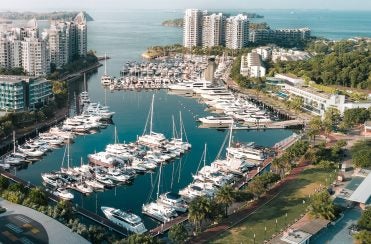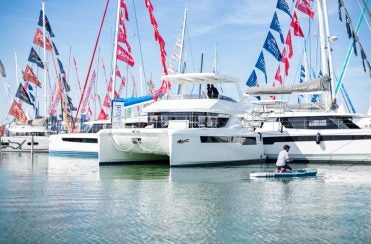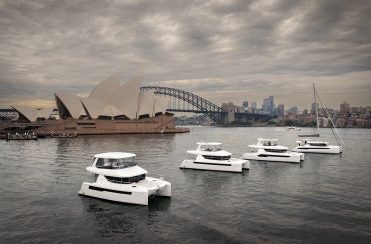Whether it is your first time or your one-hundredth time, completing a voyage across the Atlantic is always an accomplishment. Now picture this, completing it on a boat that has not yet made this passage. If you are the captain of this vessel, wouldn’t that then makes you a pioneer?
Captain Mike has been delivering Leopard Catamarans for years. In fact he has delivered nearly every model of our sailing catamarans. This trip, however, was his first time delivering a Leopard Power Catamaran. As he states, “This was my first trans-ocean delivery with a power cat, and I was impressed. She handled the seas very well, better than I had expected. Also, the fuel rate for long distance was really good.”
The Route
With a crew of three, the departure was from Cape Town, South Africa on May 19, 2018. 3,705 nautical miles and 27 days later the final destination was Vitoria, Brazil where the crew landed on June 15, 2018. The mileage and time is including the one day stop in St. Helena to stock up on more fuel. For those who are wondering, St. Helena is located in the middle of the Atlantic Ocean, it is one of the most remote islands in the world and it is also the place in which Napoleon Bonaparte was exiled.
Consumption
Naturally, anyone reading this will want to know what the fuel consumption was during the trip. And how did they do it? The method for delivering a motor yacht a long distance is simple- take it slow! To be realistic, if we were flying open throttle from point A to point B there is simply no way the yacht would make it 3,705 nautical miles. But with proper fuel planning and strategy, along with a highly efficient Leopard Power Catamaran, it can be done, and we are going to tell you how!
The Leopard 43 PC departed from Cape Town with 1,000 liters in the tanks and 2,000 liters in plastic fuel drums. When they arrived in St. Helena they took on 600 more liters of fuel. The average speed of the yacht was 6.2 knots with an average fuel consumption of 1 liter per nautical mile. During the journey, the crew ran one engine at a time. The total fuel consumption for the entire trip was 3,400 liters and the yacht traveled 3,705 nm. If you are doing the math in your head, then you will note that she actually performed better than her average of 1 ltr/nm.
Weather
Rough weather and poor seas can make a trip a lot more difficult than it needs to be; which is why waiting for your weather window is a common practice for ocean deliveries.
For this delivery, the crew was able to obtain the weather reports twice a week or more (depending on weather conditions) using a satellite phone with sms texting. Some of the roughest seas that were endured were 3 meter (almost 10 feet) side swells with 25 knots of wind! The average seas for the delivery were 2.2 meters (about 7 feet). And the average wind speeds were 12-17 knots north-northwest. The longest streak of calm days on the water was five. During the calm days the crew was able to take advantage of enjoying the flybridge, even when is was not their watch.
What about the boat?
After living aboard the Leopard 43 PC for an extended period of time, I couldn’t wait to find out how the delivery crew felt about the boat. As mentioned previously, the crew was pleased with the way in which she handled. In fact, the yacht exceed expectations. And what were some of the favorite features? “Keeping the forward door open allowed for excellent airflow and of course the flybridge is great,” Mike confesses. I can imagine the flybridge of a power cat is quite a nice feature when you consider that Captain Mike has spent his career delivering sailing catamarans. The crew mentioned that the WiFi hard drive was the handiest item they had on board, they enjoyed having it especially during down time. If the weather was not good, the crew would opt to sit outside in the aft cockpit. If the weather was good, naturally the crew would gravitate towards the flybridge.
Of course no Atlantic crossing would be complete without trolling. Luckily the group was able to catch and grill up some fresh fish during their time aboard. Dorado, Tuna and Yellowtail were the indulgences of the journey.
While the journey for the delivery crew is now over, for the owners of this new yacht, the journey is just beginning. As of July 18th “The Kimnara” was officially the first Leopard 43 PC to not only cross the Atlantic, but also the first to be handed over in South America. To discover pricing, options and availability on a Leopard 43 PC, click the button below to build your boat.


